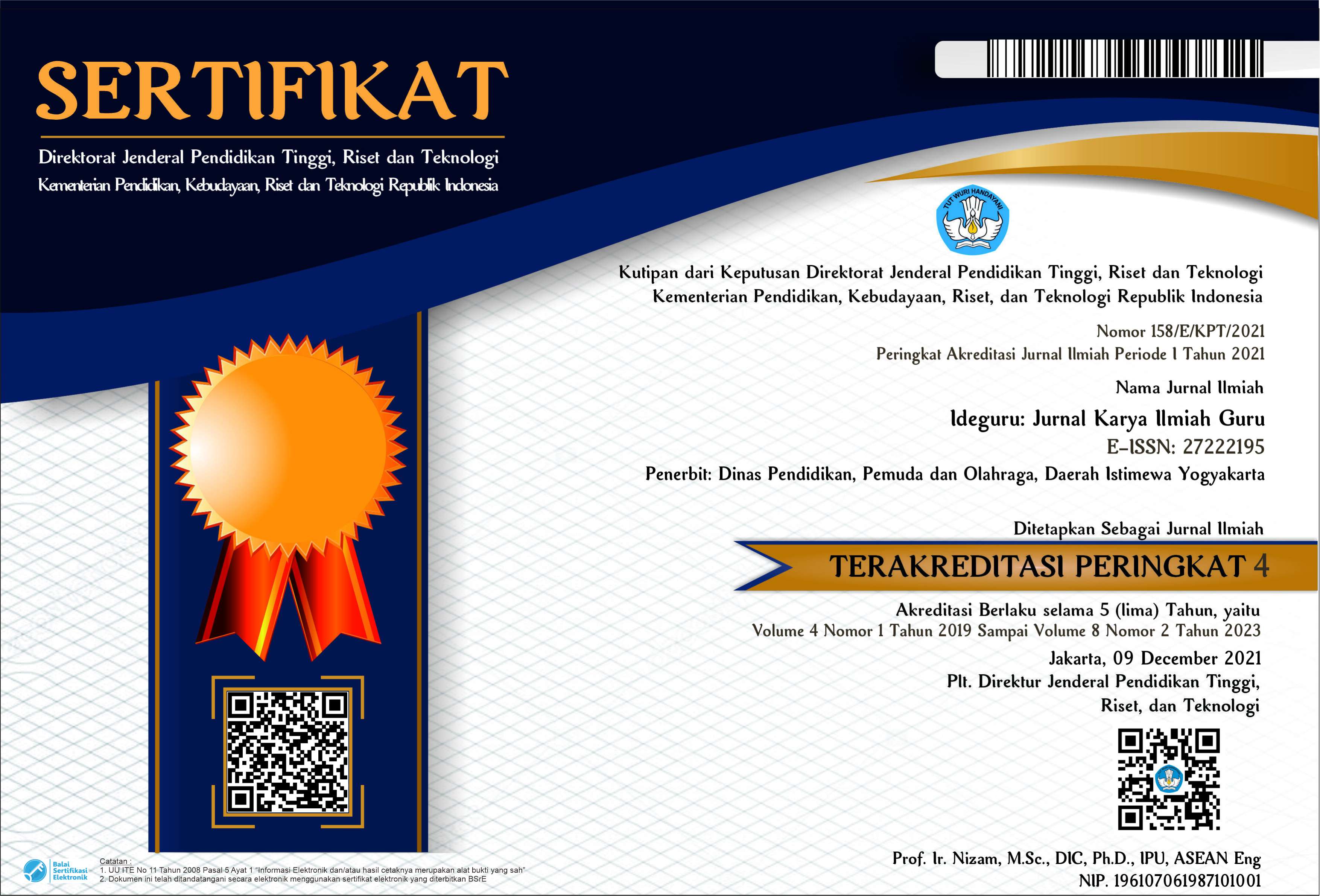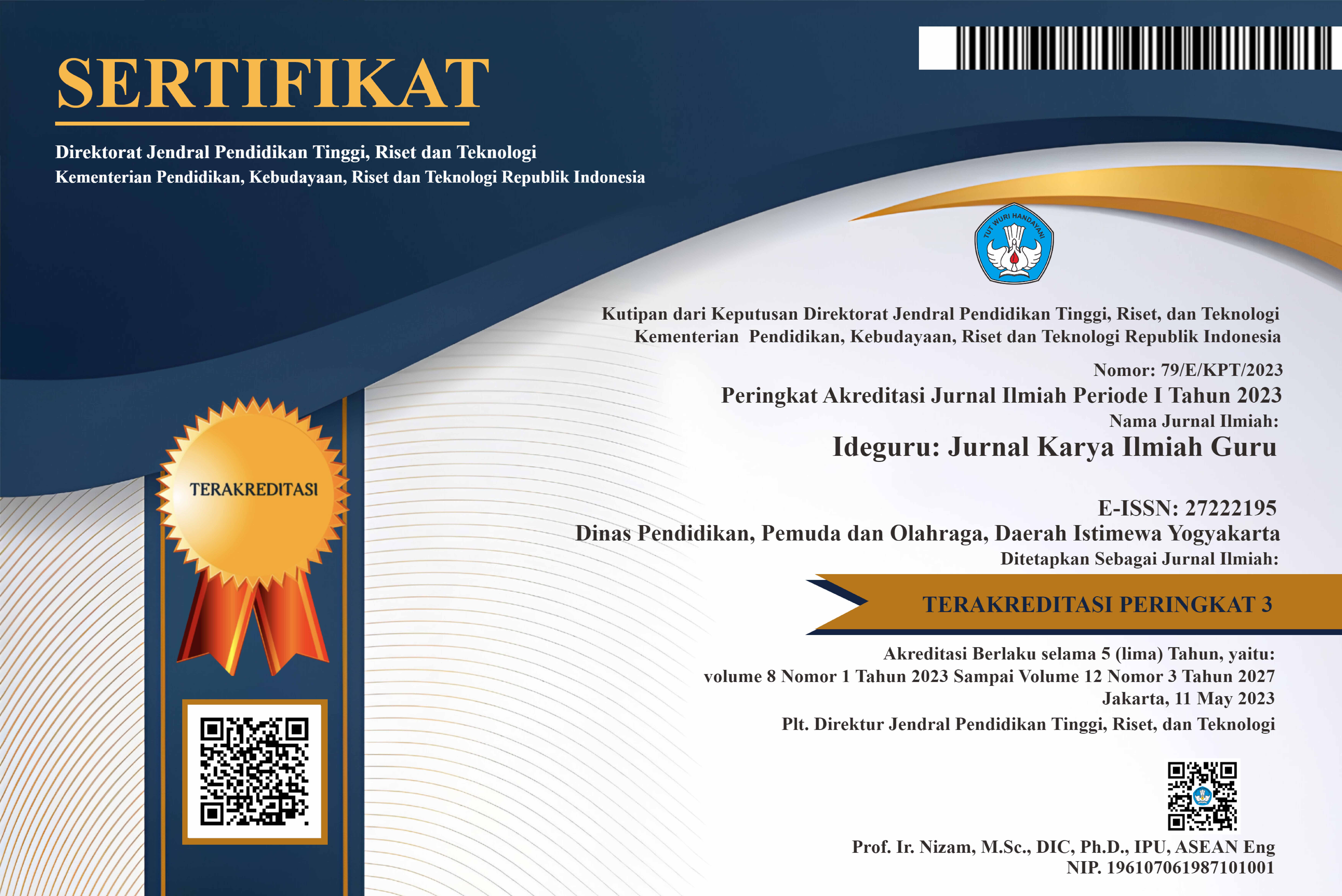Penggunaan Aplikasi Plagiarism Checker dalam Pembelajaran Menulis Daring
Abstrak
Penyebaran Corona Virus Disease (Covid-19) yang meluas hampir di seluruh dunia mengharuskan diterbitkannya regulasi yang mengatur pelaksanaan penyelenggaraan pendidikan dalam rangka menyelamatkan bangsa dari bahaya pandemi Covid-19. Hasil kerja peserta didik perlu diverifikasi, salah satunya dengan pengeceken plagiasi. Sebagai sebuah best practice, pengecekan plagiasi terhadap produk menulis ini dapat terlaksana dengan lebih mudah pada saat pembelajaran daring. Pembelajaran menulis teks prosedur dengan tema “How to Use Masks” pada Kelas IX semester 2 tahun pelajaran 2019/2020 berhasil memberikan pengalaman terbaik terkait pengecekan plagiasi. Materi pembelajaran berupa dua video yang yang berfungsi sebagai input yang menjadi bahan inspirasi dalam menyusun teks baru. Produk pembelajaran menulis berupa teks dinilai berdasarkan rubrik tertentu. Salah satu aspek dalam rubrik tersebut adalah angka persentase keunikan produk yang menggambarkan tingkat keaslian produk belajar yang pengecekannya dilakukan dengan aplikasi Plagiarism Checker yang diakses secara online. Produk pembelajaran diberi skor untuk tujuan penilaian dan sekaligus diukur tingkat plagiasinya. Hasil pengukuran menunjukkan tingkat ketuntasan 96% dengan rerata skor 86, nilai terendah 65, nilai tertinggi 97. Hasil pengecekan angka persentase keunikan produk yakni 100% unik sebanyak 53%, 1 s.d 99% unik sebanyak 36%, 0% unik sebanyak 2%, dan sebanyak 9% tidak terdeteksi. Hasil pengecekan plagiasi ini memberikan pengalaman baik bagi peserta didik maupun pendidik untuk mengedepankan aspek keaslian atau orisinalitas karya. Poin inovasi best practice ini terletak pada dicantumkannya aspek keunikan karya dalam penilaian produk menulis.
Data Unduhan PDF
Copyright (c) 2021 Ponikem

This work is licensed under a Creative Commons Attribution 4.0 International License.

 DOI:
DOI:














